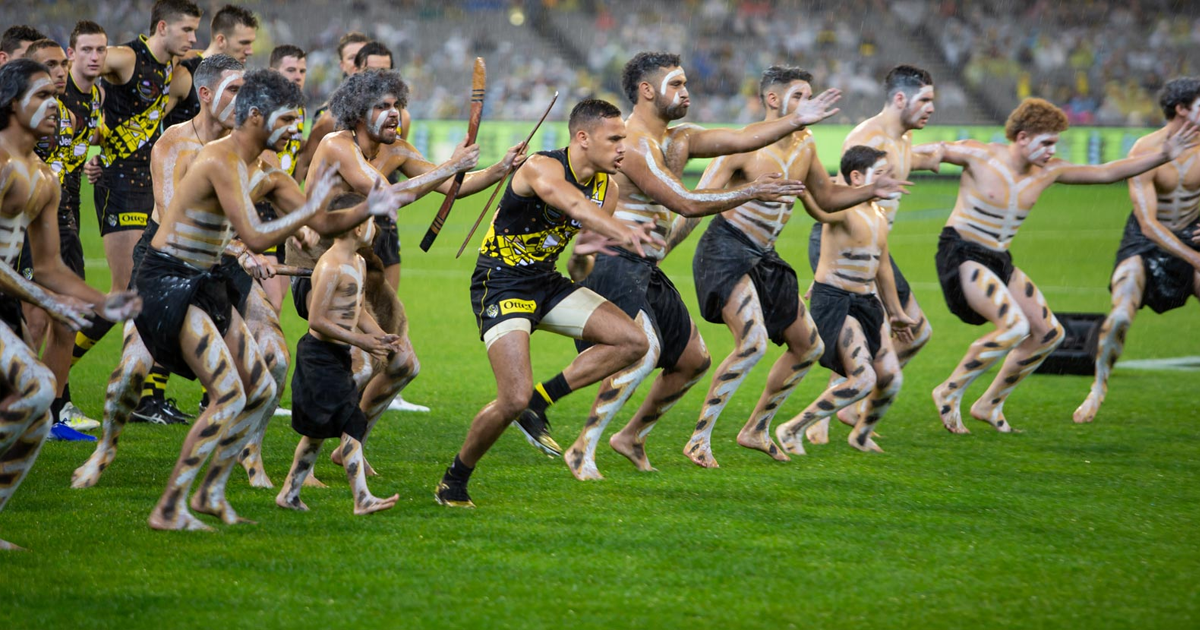Steps towards reconciliation in community sport clubs

Image: mcg.org.au
Culture within community sport can take on a variety of meanings. We have the culture within the club environments itself which can include the practices, rituals and general ‘vibe’ around the club created by members, participants, coaches, families and the like.
In another aspect, culture can relate to our norms and ways of being as a society, this may include cultures of people from a variety of backgrounds, including those of traditional owners of our lands, Aboriginal and Torres Strait Islander peoples.
With sport often being an outlet and even a ‘safe haven’ for many people, from a diverse range of backgrounds, and as we work towards ensuring clubs are safe spaces for people of all backgrounds, there are ways we can work both as individuals and together to create more inclusive clubs for Aboriginal and Torres Strait Islander peoples, whilst also learning to understand and celebrate culture.
Community sporting clubs have an opportunity to become allies, or even better accomplices for and with Aboriginal and Torres Strait Islander peoples and communities.
This means as individuals reflecting on our own relationships with Aboriginal and Torres Strait Islander peoples and actively taking steps to re-learn about histories and understanding of what it means to be Aboriginal and/or Torres Strait Islander in today’s world. For myself, this is learning and reflecting on the structure and education that have contributed to how I see the world and steps within myself to understand these histories.
As part of this reflection, we will discuss some small steps to embrace culture within our sport clubs.
- Include an Acknowledgement to Country, that is unique to your club and lands that you are playing on, prior to the commencement of events and club functions, particularly when external people are present. Creating an Acknowledgement to Country, can provide an opportunity for you to reflect on and acknowledge your own past and current relationship to both the lands and communities who are the traditional owners. If you are unsure of which lands your club is on the AIATSIS provide an excellent map based on traditional land ownership.
- Ensure your facility commemorates the traditional land owners. This may be achieved through a plaque or signage paying respects to and acknowledging the traditional land owners. Some other options are displaying signage that demonstrates your club is friendly and welcoming for Aboriginal and/or Torres Strait Islander peoples. To understand what it means to be an ally, or an accomplice in supporting Aboriginal and Torres Strait Islander peoples and communities read this article by Summer May Finlay.
- Have your committee and leadership teams attend a cultural competency workshop. This is a great place to start learning more about Aboriginal and Torres Strait Islander histories. In Victoria, Koorie Heritage Trust provide half day cultural competency workshops which can also be tailored for large groups. Across Australia there are many Aboriginal-lead organisations who deliver similar training.
- Include a Reconciliation Action Plan (RAP) plan in the strategic planning for your club committee. This can ensure your club is acknowledging the broader role it plays in embracing Aboriginal and Torres Strait, and have a sound framework to achieve goals around reconciliation and inclusion. Reconciliation Australia provide some further resources on RAPs and strategies your club can utilise in this space. Alternately, your National or State sporting body may be able to provide you with some preliminary guidance on developing this within your committee.
- Community elders are respected and senior members of Aboriginal and Torres Strait Islander communities. Your club can engage local elders and have them do a Welcome to Country and educate your members and participants on the local culture. A great starting point to provide an opportunity for all members of your club to reflect on and learn more about their own relationship with Aboriginal and/or Torres Strait Islander peoples. For example, connecting with local community groups such as Wurundjeri Woi Wurrung Cultural Heritage Aboriginal Corporation
I respectfully acknowledge the Woiwurrung People of the Kulin Nation and Elders past, present and emerging who are the Traditional Owners of the land on which this article has been written. As such I take this acknowledgment as an opportunity to reflect on my own relationship with traditional lands. I also acknowledge Elders and all Aboriginal and Torres Strait peoples across Australia, their ancestors, cultures and histories. I would also like to thank Dr Andrew Peters for his guidance, advice and input.
 Chelsey Taylor is a PhD candidate within the Sports Innovation Research Group at Swinburne University of Technology. She is passionate about the social role sport can play within broader society. She is a lover of community sports, playing both soccer and touch rugby as well as a fan of the Carlton Blues.
Chelsey Taylor is a PhD candidate within the Sports Innovation Research Group at Swinburne University of Technology. She is passionate about the social role sport can play within broader society. She is a lover of community sports, playing both soccer and touch rugby as well as a fan of the Carlton Blues.
Contact Chelsey on LinkedIn